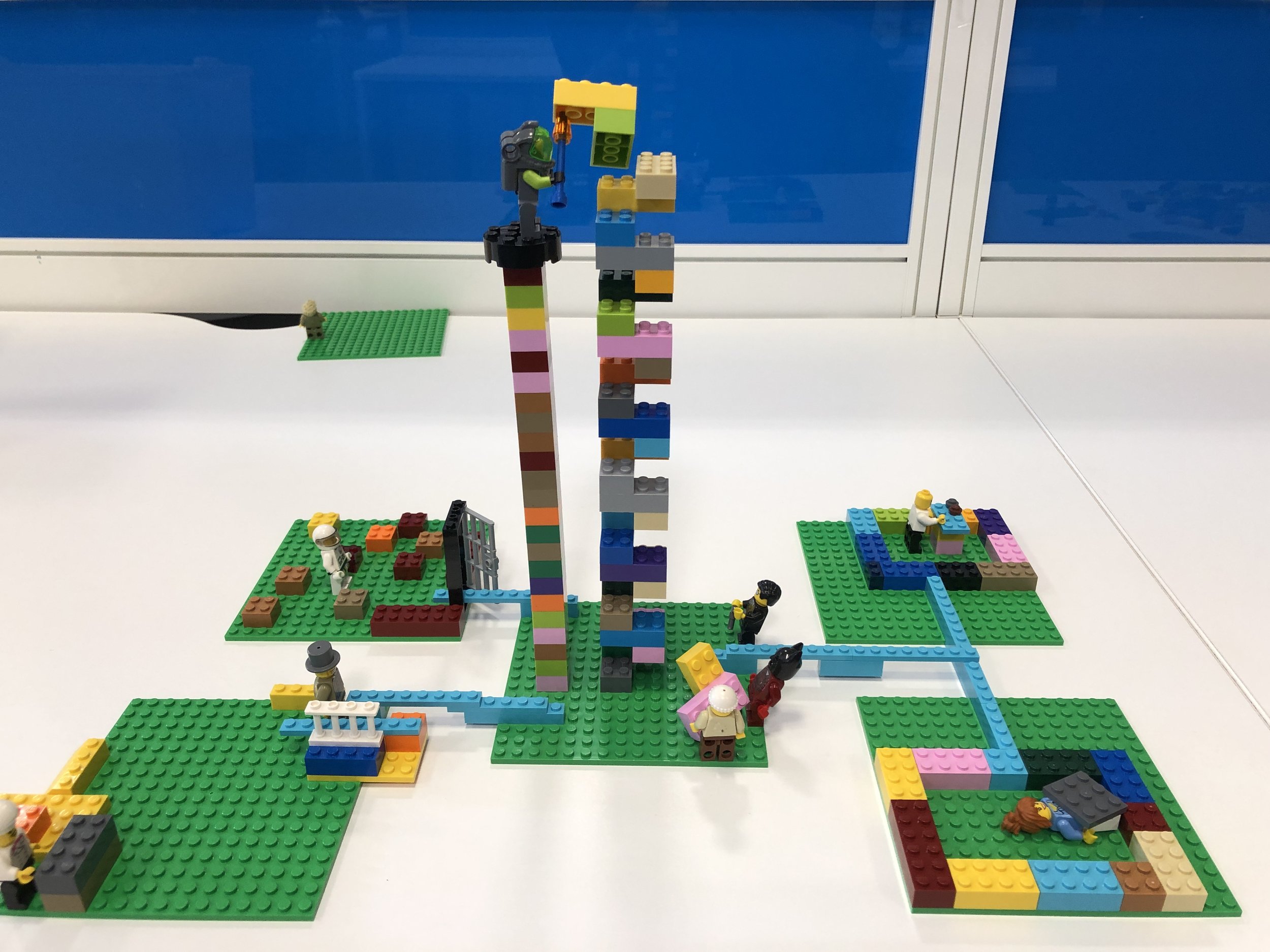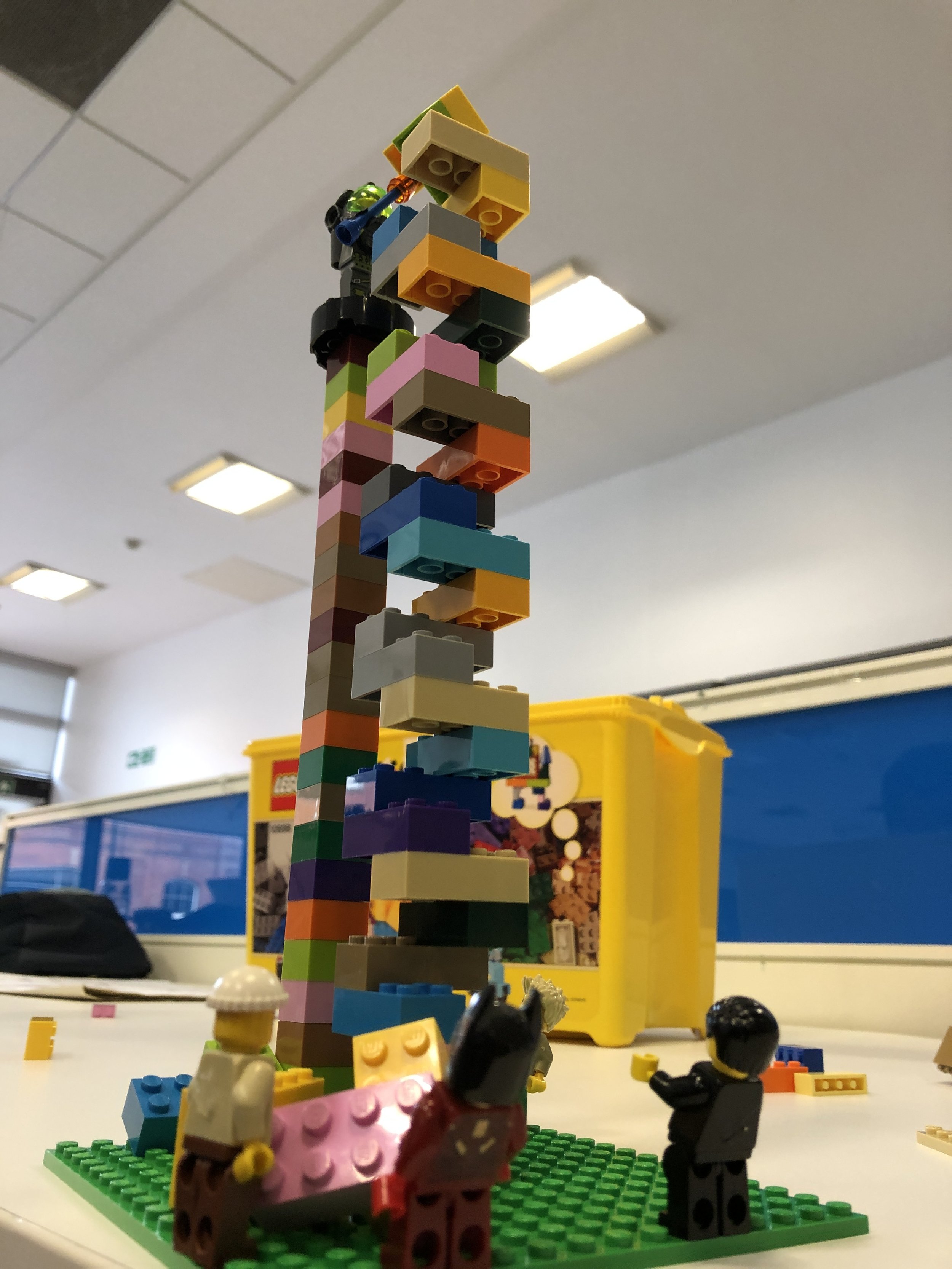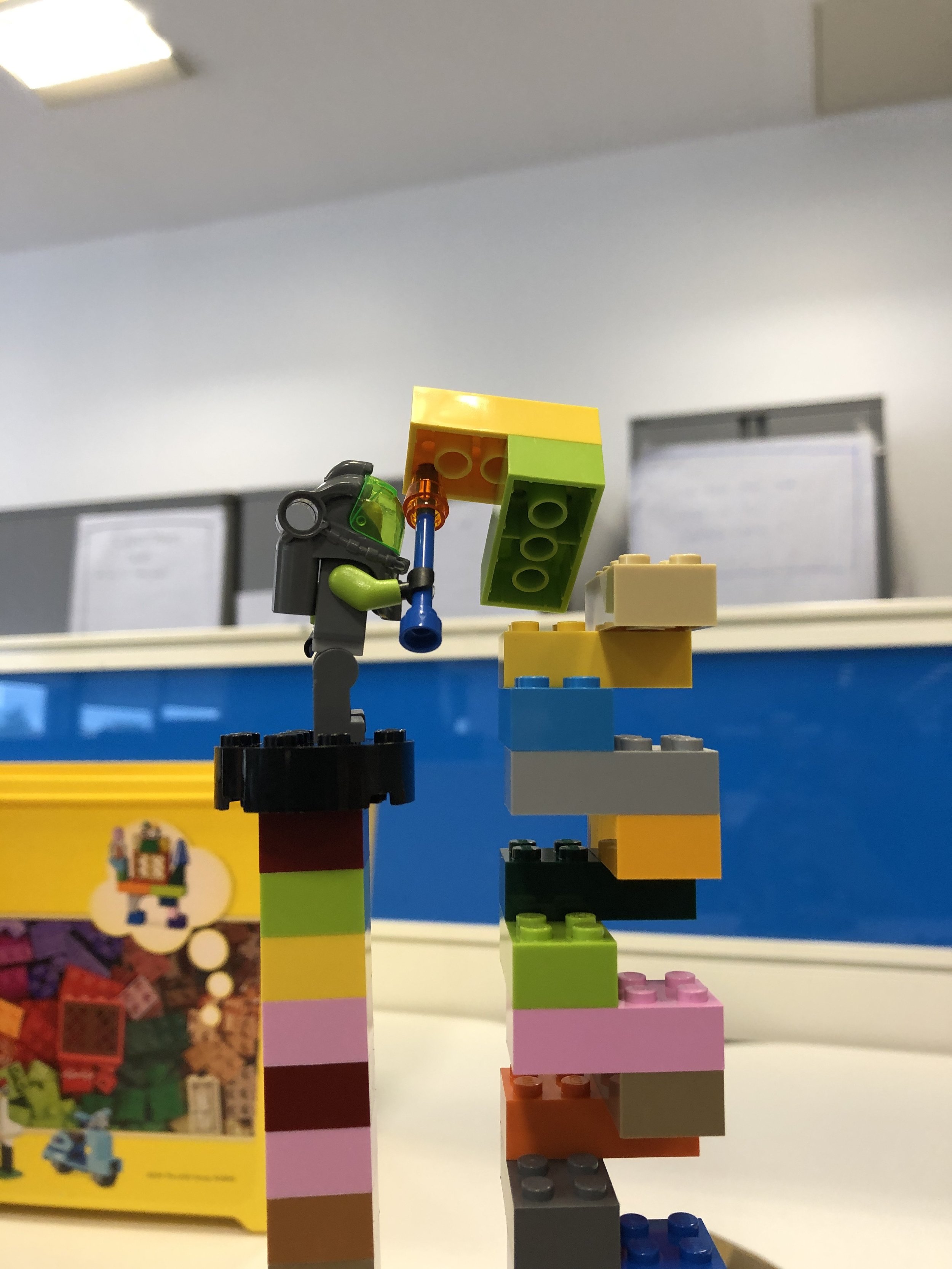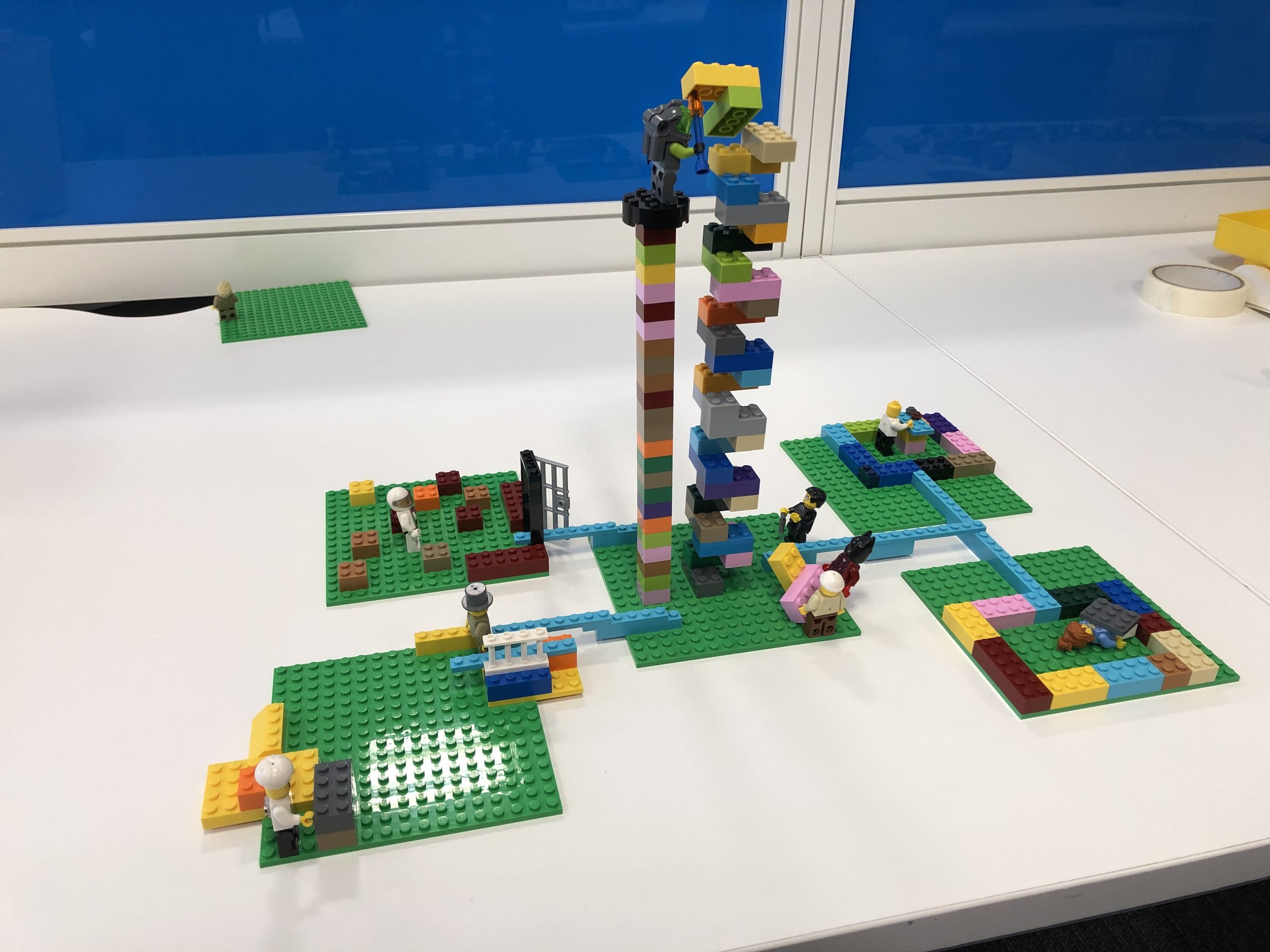LEGO(C) Serious Play with Design Sprints
I first came across LEGO(C) Serious play around 3 years ago during a workshop I was a participant on… I’ve since used it a few times, especially in conjunction with Clean Language (https://www.thatsintelligence.com/blog/clean-language-for-agile-coaches) Clean language is based on the construction of metaphors and then asking a series of ‘Clean’ questions to explore the metaphor.
LEGO(C) serious play is based on building physical models… Out of Lego! I’ve recently started to introduce LEGO(C) serious play into Design Sprints - Design sprints come from Google Ventures and are typically a 5 day design process to build and test products (https://www.thatsintelligence.com/blog/design-sprints)
I’ve found it to be an excellent way of helping a team to articulate what’s important in a product and identify end goals… And I’d like to share to format with you!
Anybody who’s ran a design sprint will know how busy they already are so I was conscious of the time taken up with yet another activity so I’ve designed the entire exercise to take under an hour and recently had an opportunity to try it out with a client who are building an innovate Blockchain product.
Step 1 - Individual exercise.
Each person has 2 minutes to build a tower…. In silence! At the end of the 2 minutes each person gets a chance to explain and talk through the tower they’ve built and attach meaning if any to it. Whilst people are talking encourage them to point and touch and ensure that the rest of the group are listening.
Why build a Lego tower? This is partially just a familiarisation exercise, getting people used to ‘playing’ with Lego again.
It also gives people a chance to talk and attach meaning to what they’ve built - this is going to be really important in the next 2 exercises.
Step 2- Individual exercise.
Pose a question…. In my workshop I asked the following question :-
“I’d like each person to build a Lego representation of the completed Blockchain product”
This time give the group 8 minutes to build. Again at the end of the build session each person has an opportunity to talk through their model and to tell a story around it.
Step 3 - Group Exercise
The last exercise is a repeat of exercise 2 - but done as a group. Again I gave the team 8 minutes of build time - And asked the question :-
“As a team, build a Lego representation of the completed Blockchain product”
The team then collectively told the story around what they’d built - taking it turns to explain various parts.
At the end of this session the team had a collective understanding of what they were trying to achieve and had made some key decisions.




